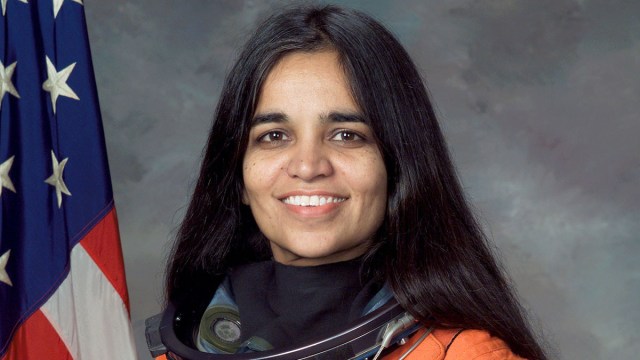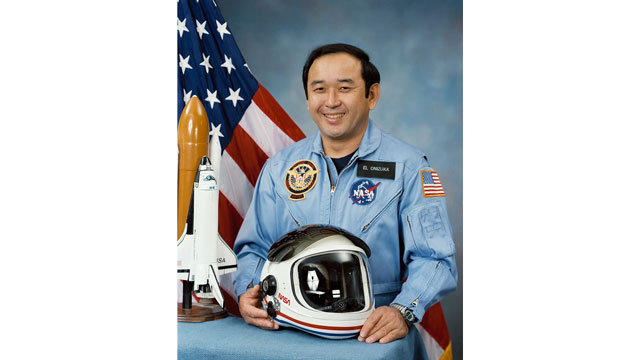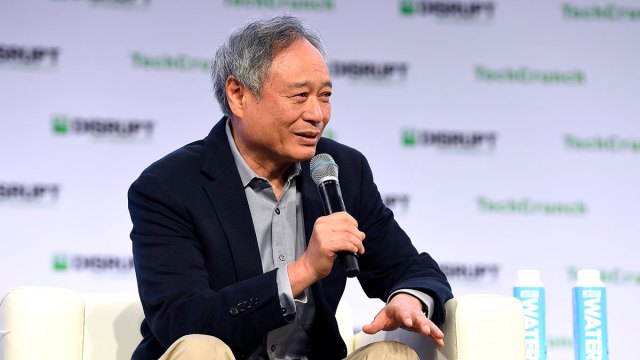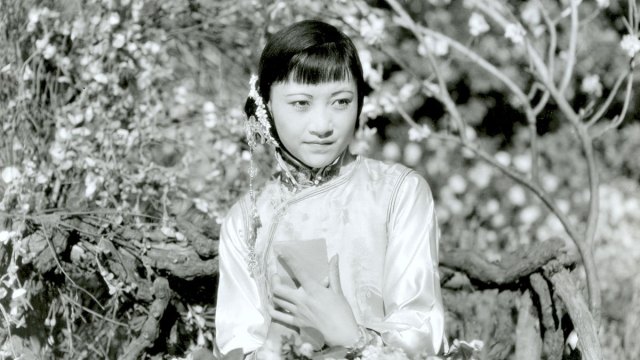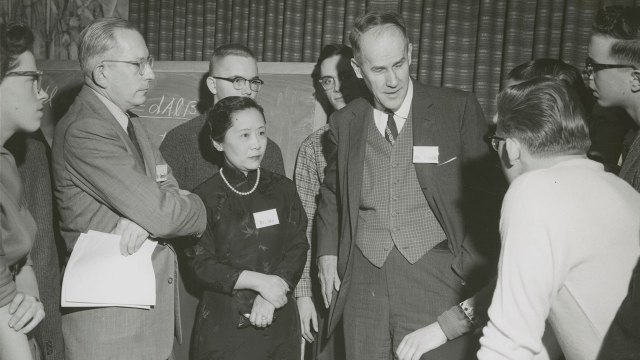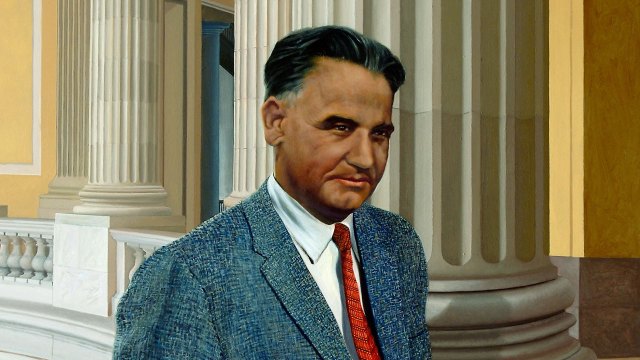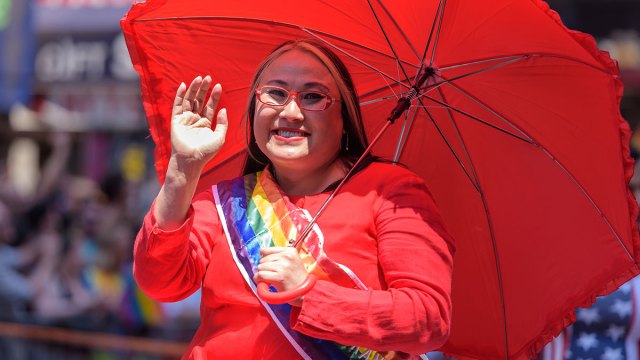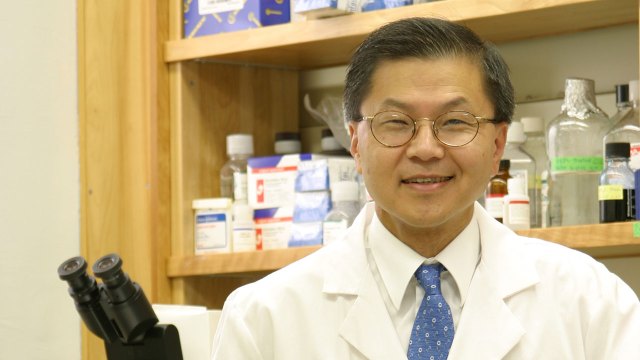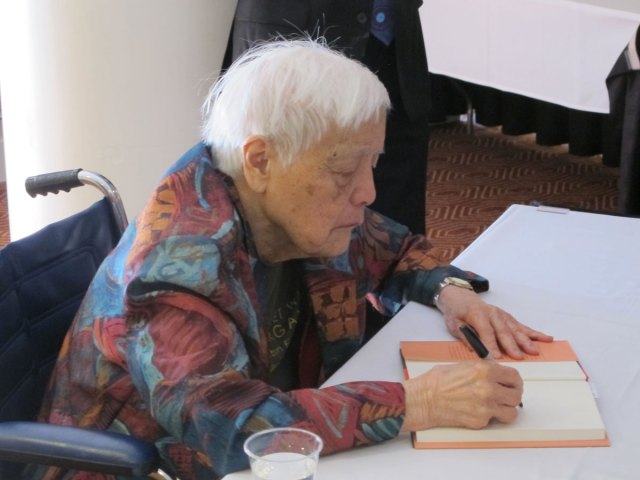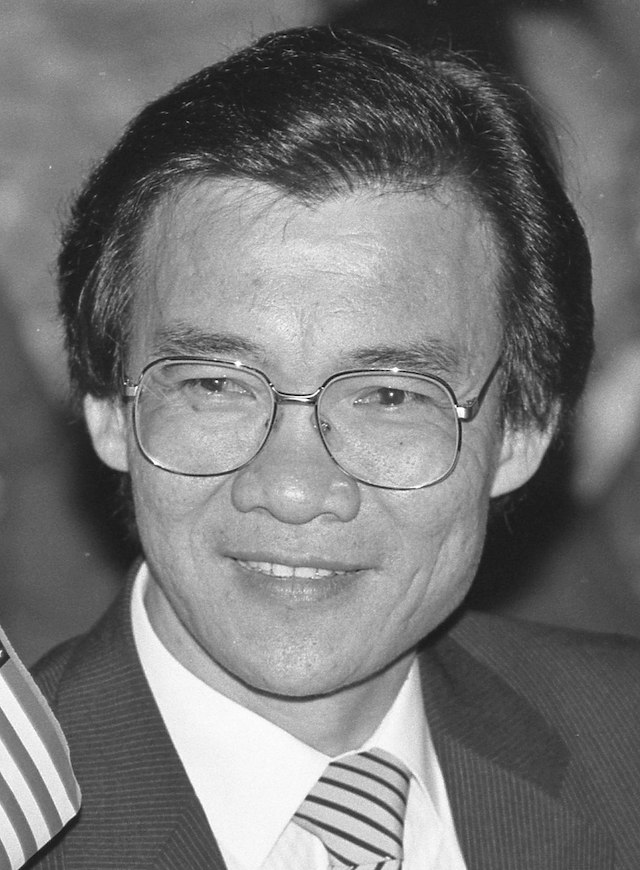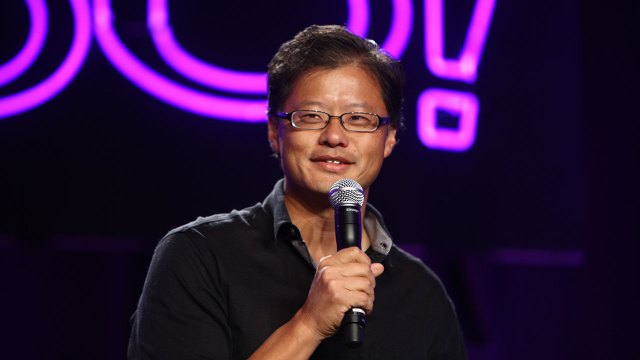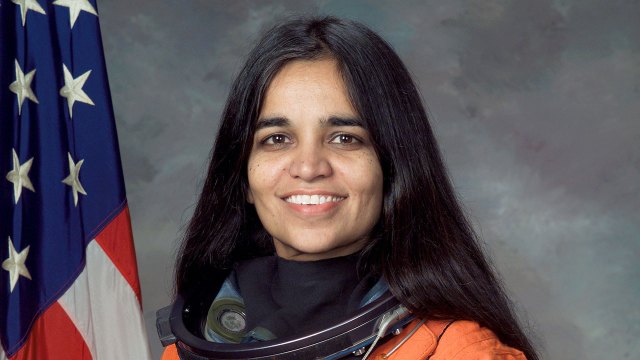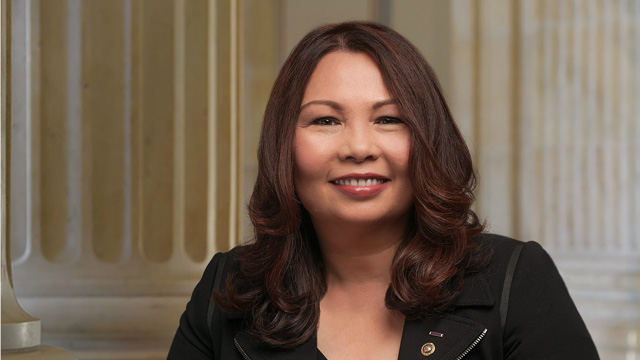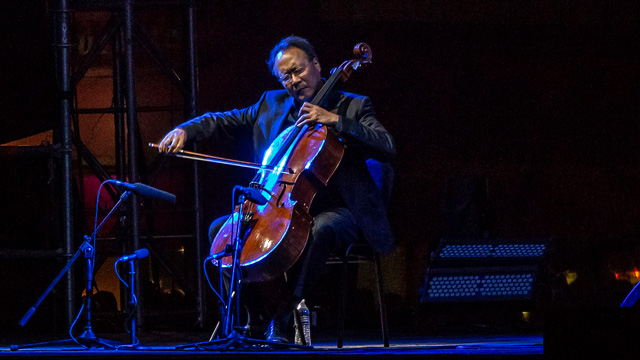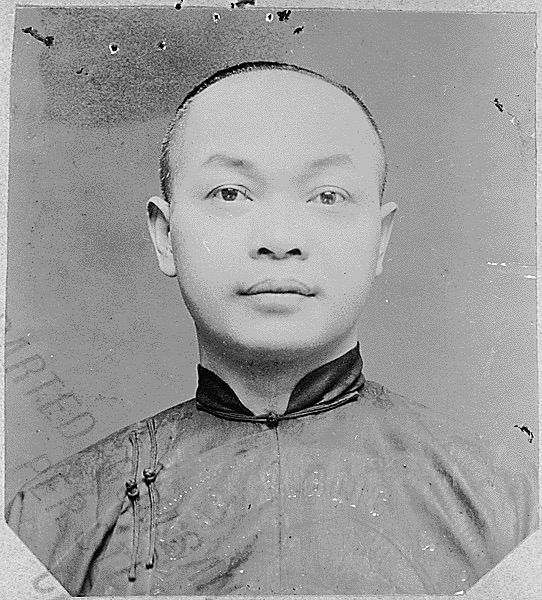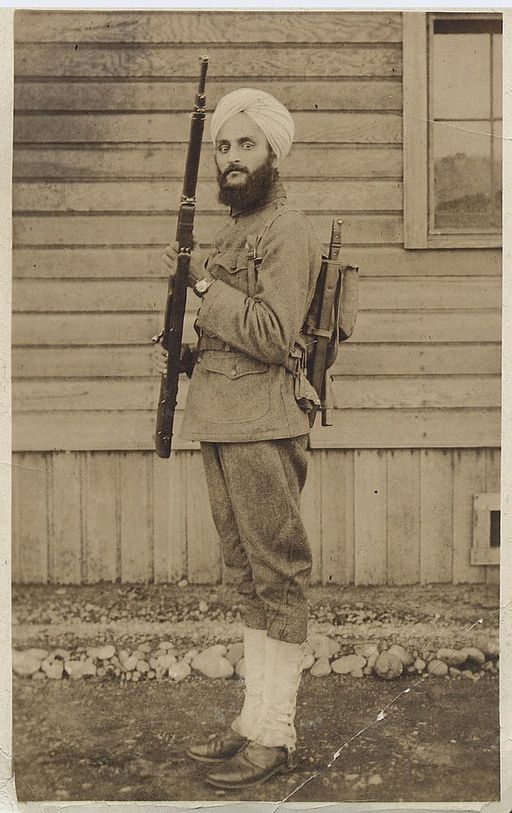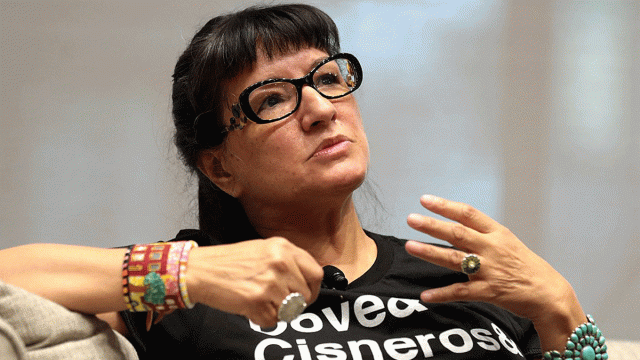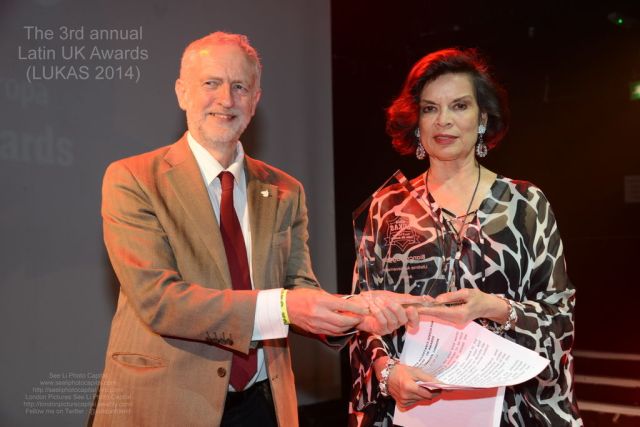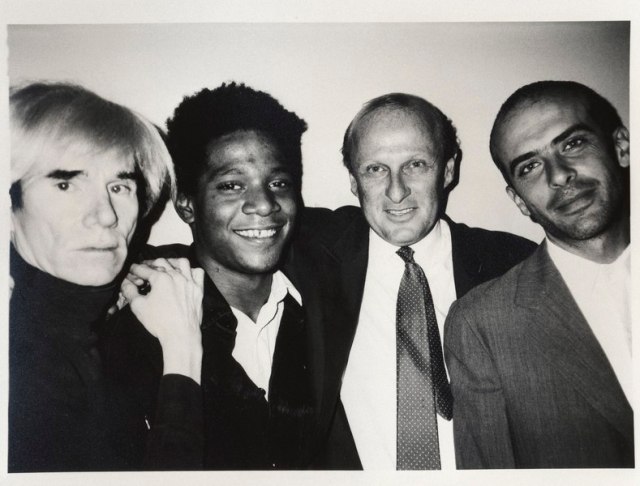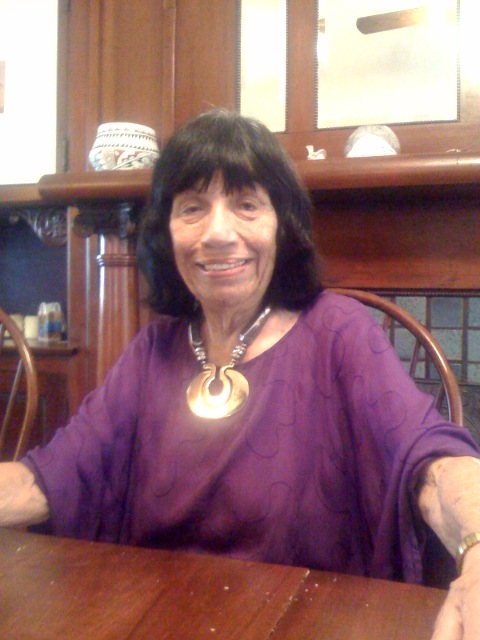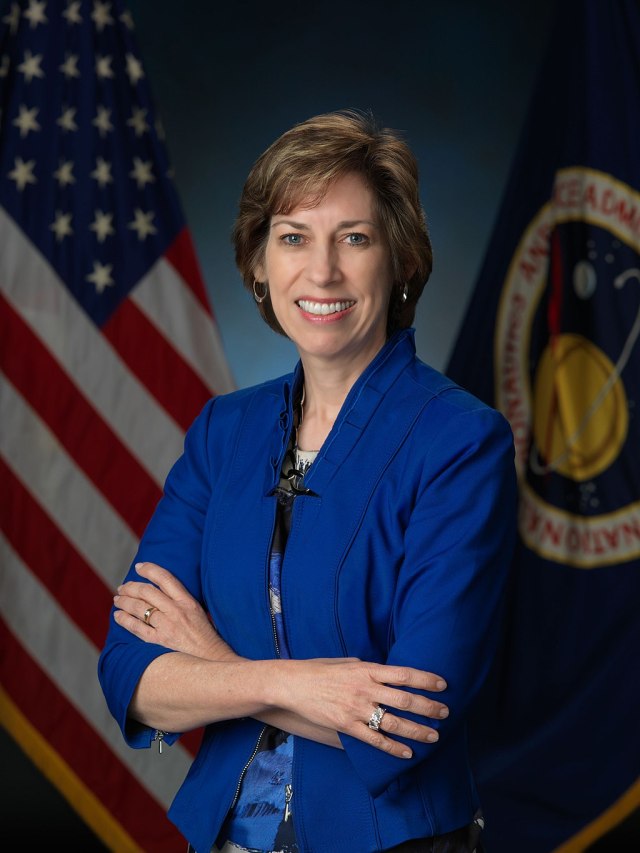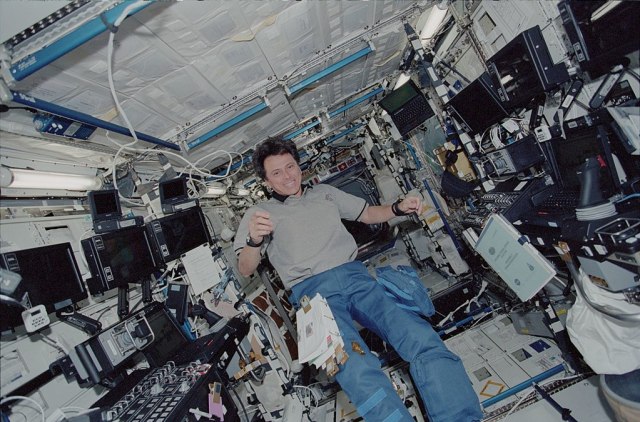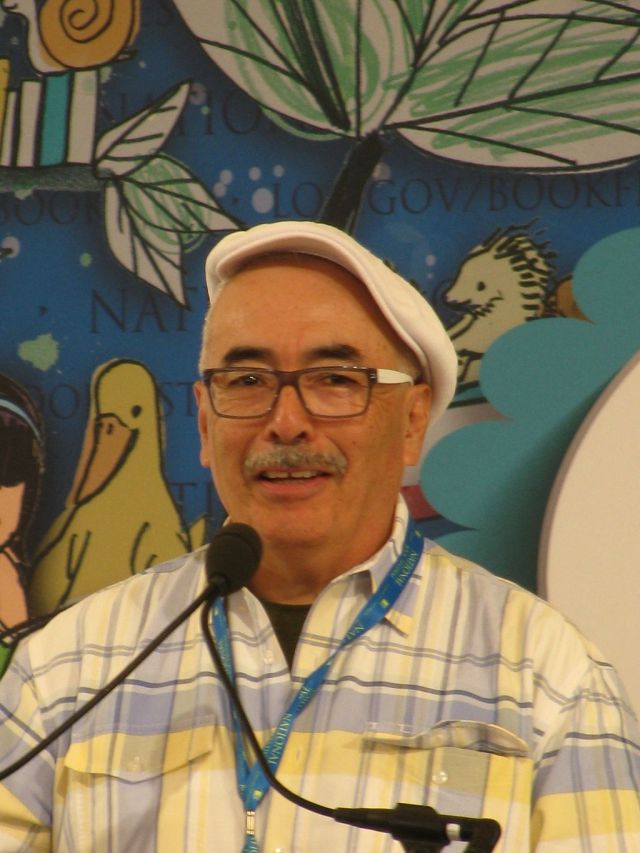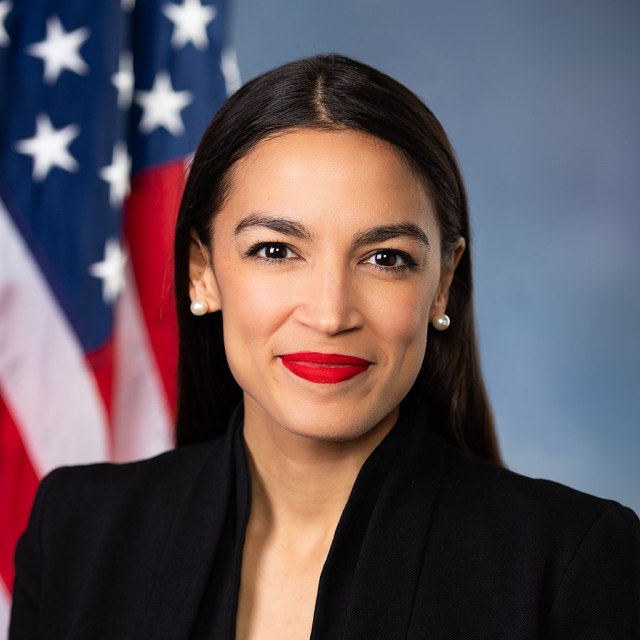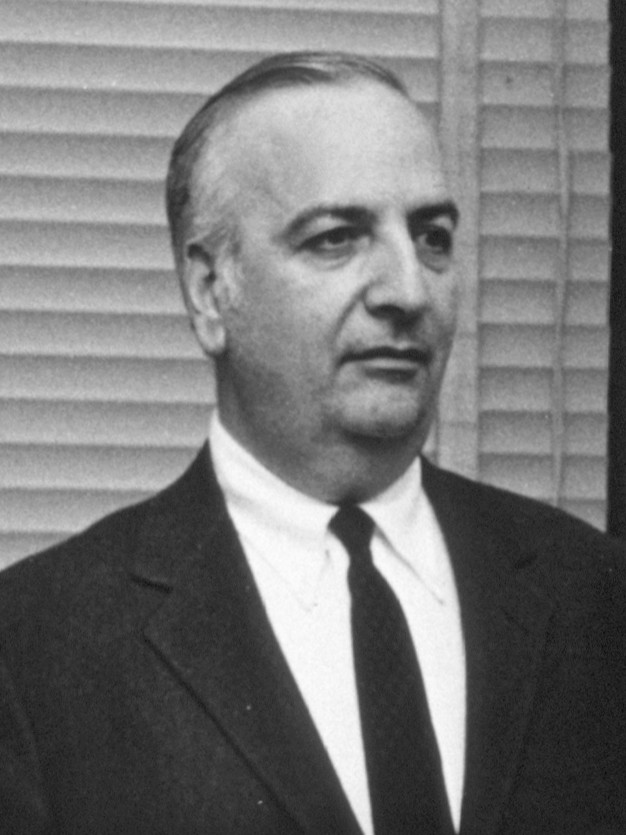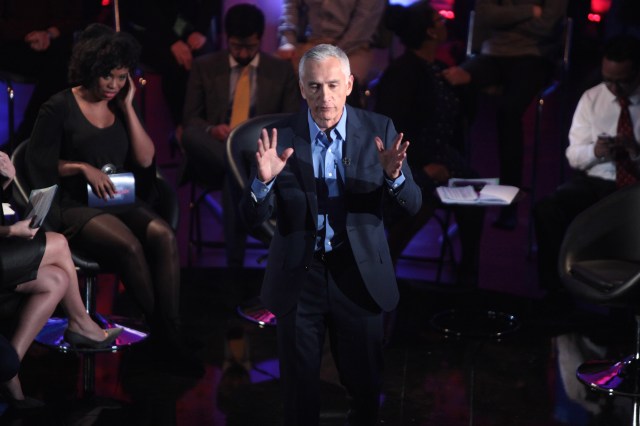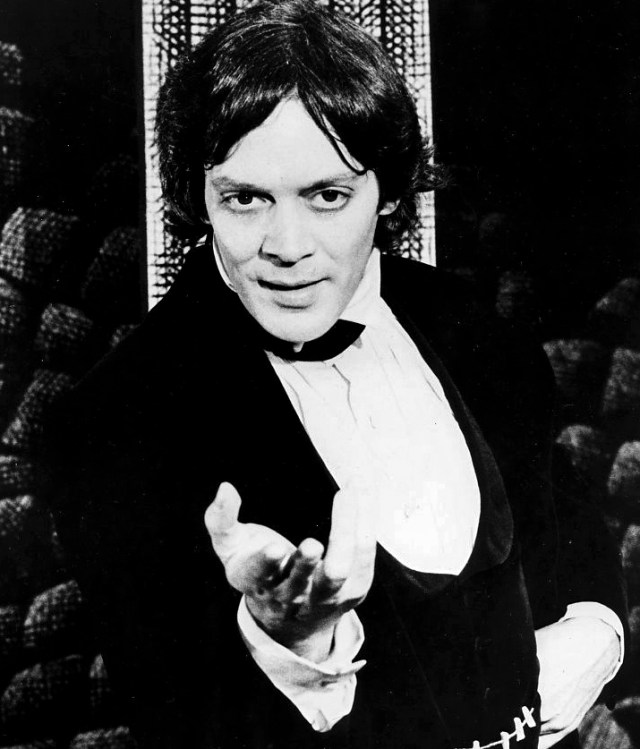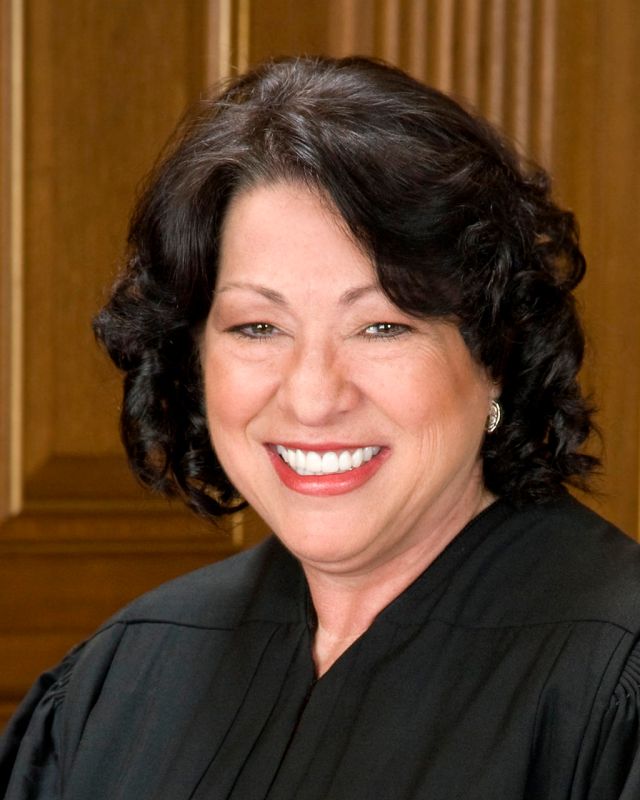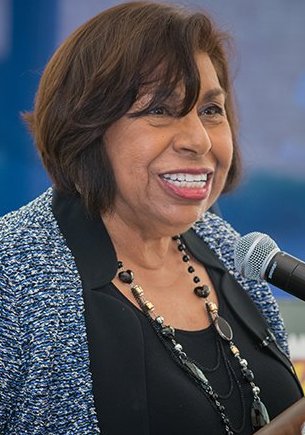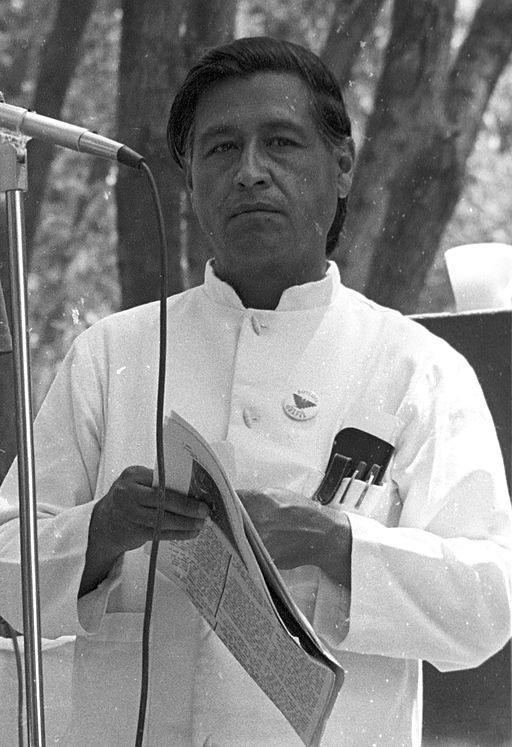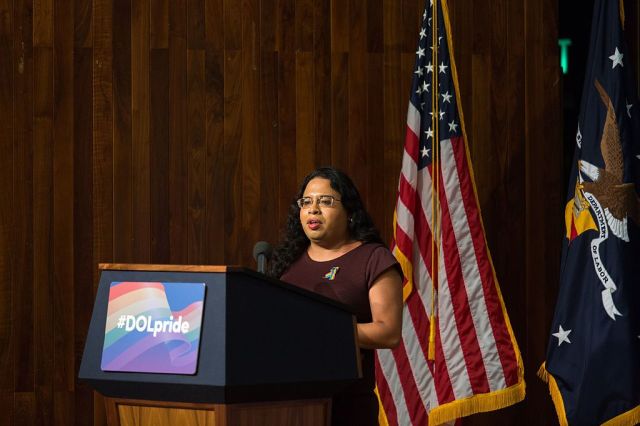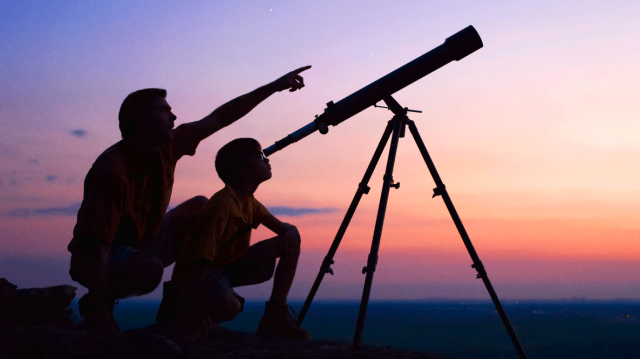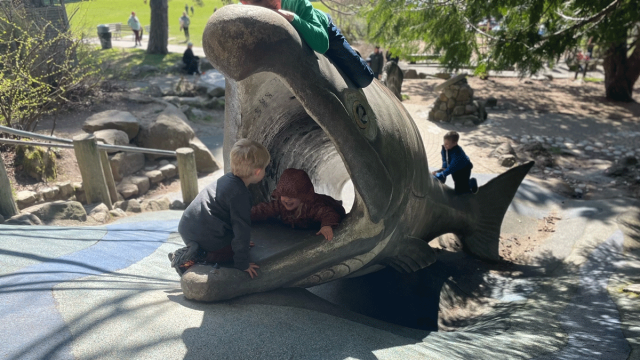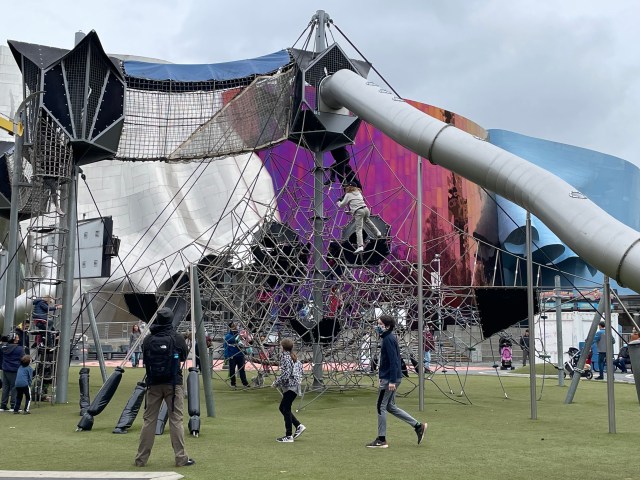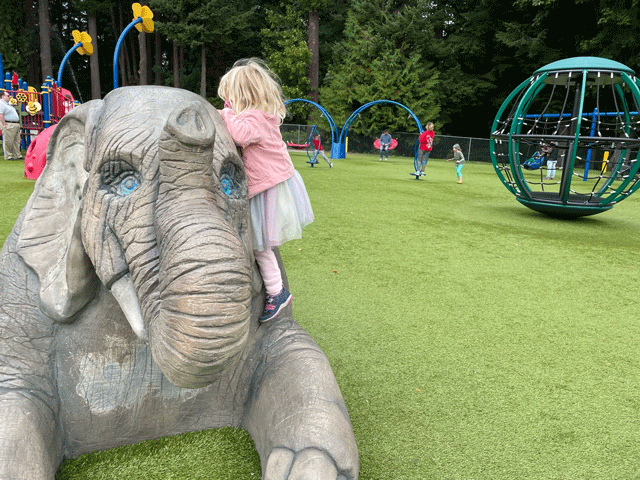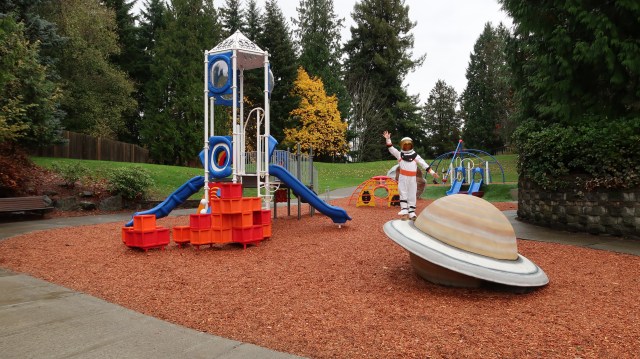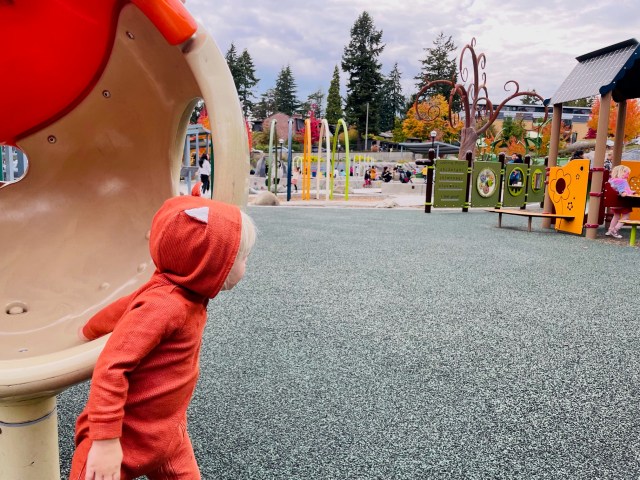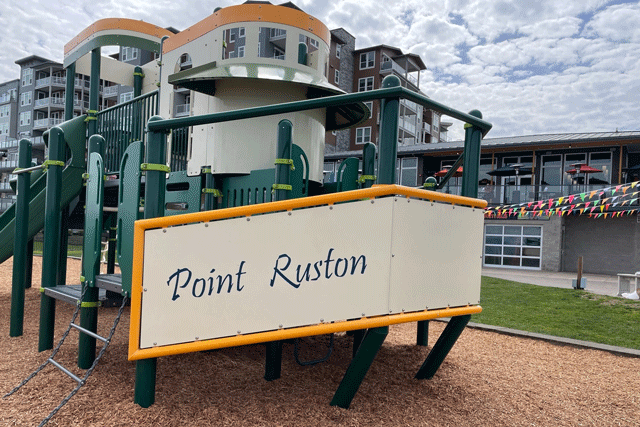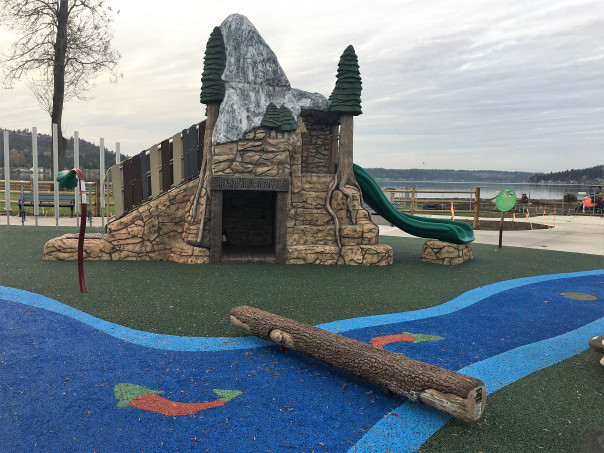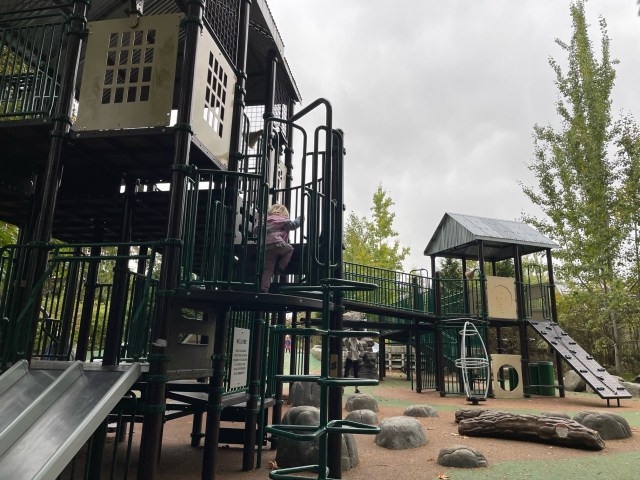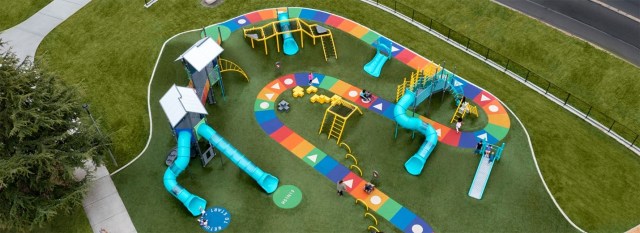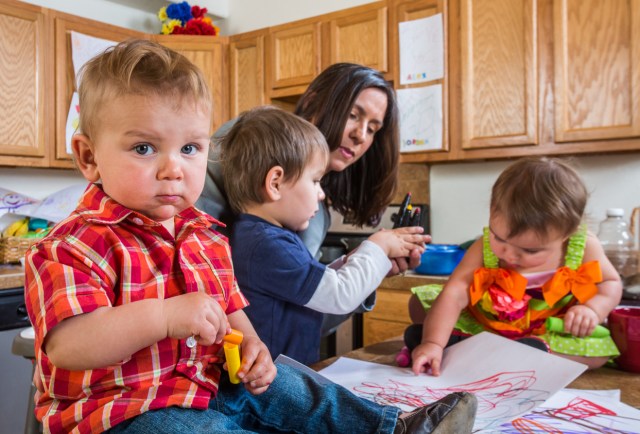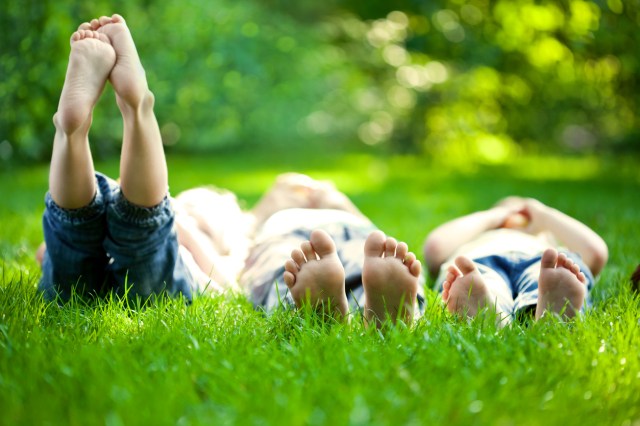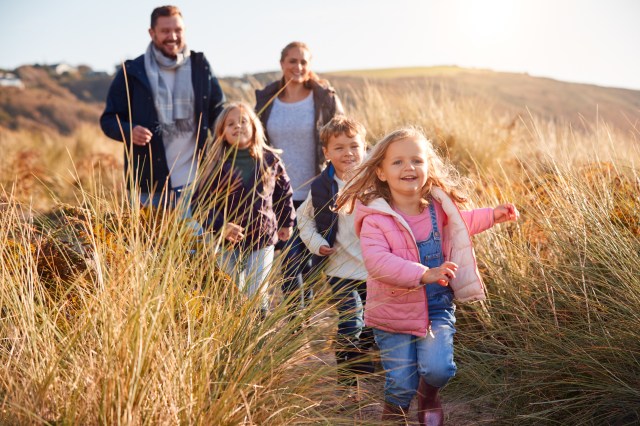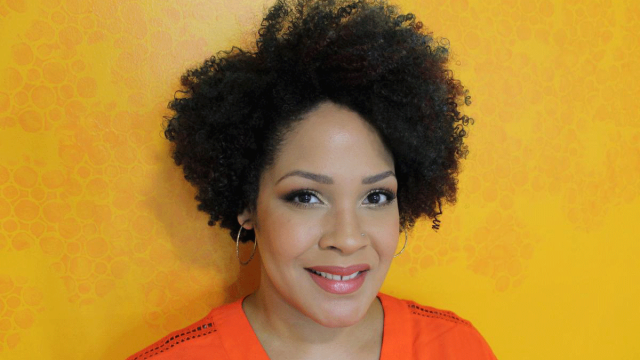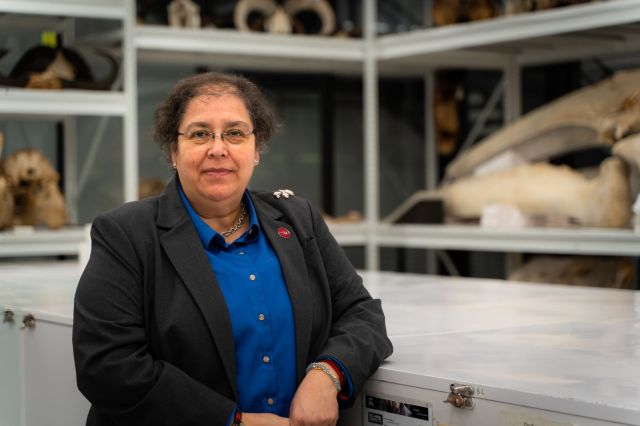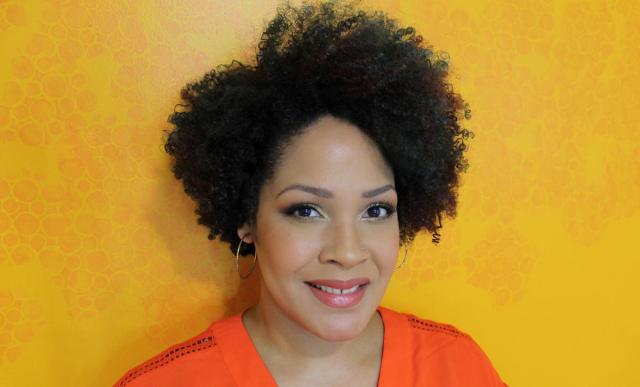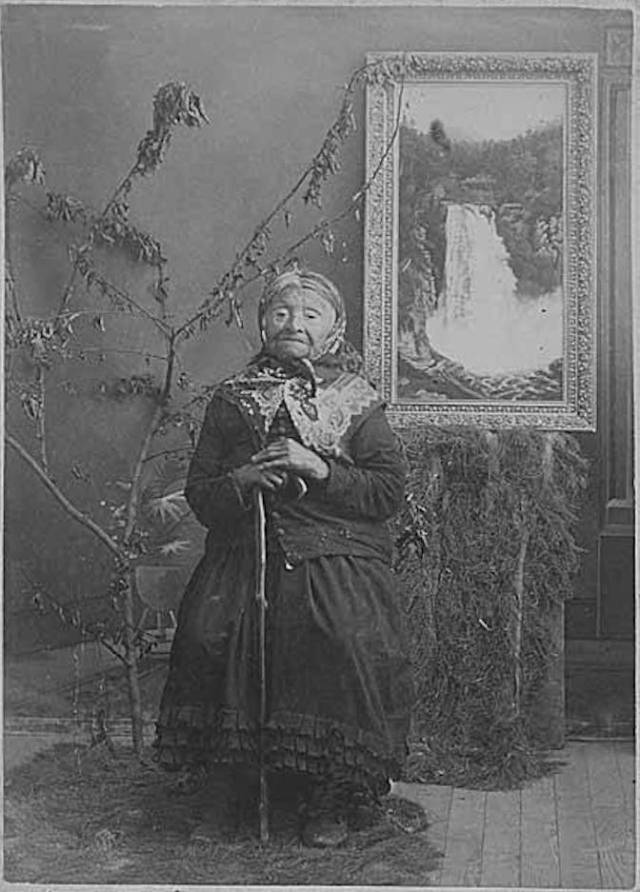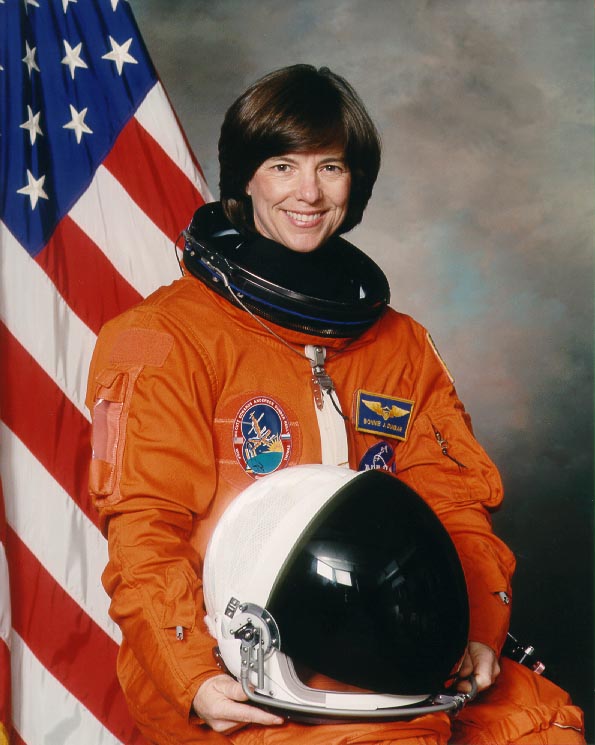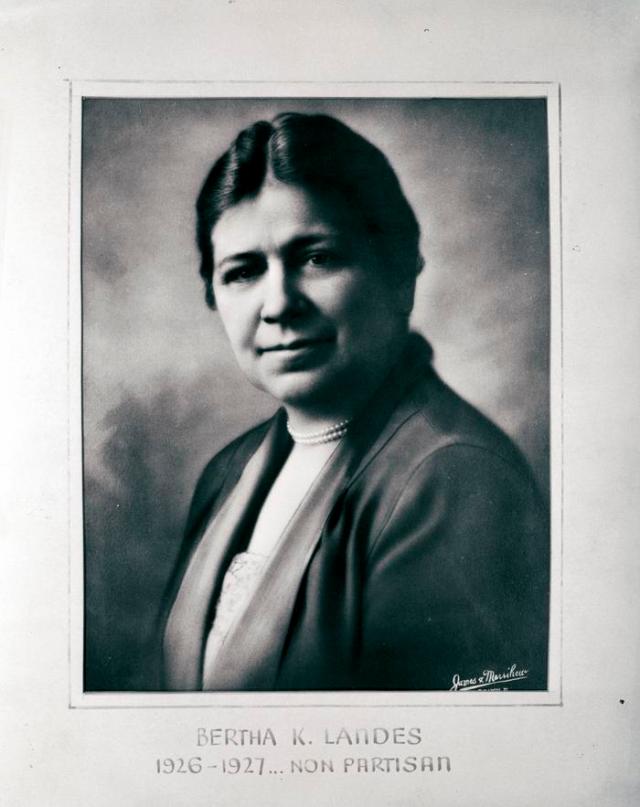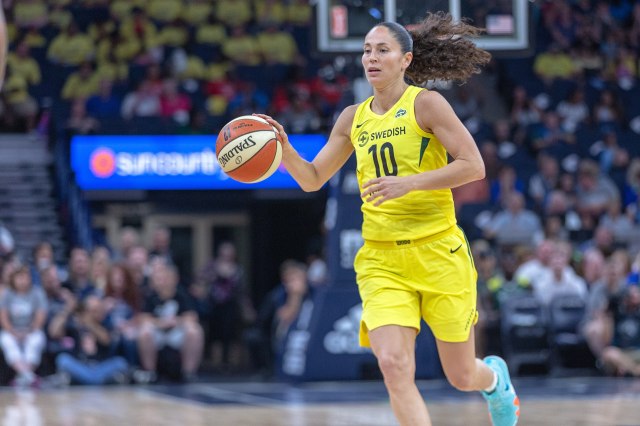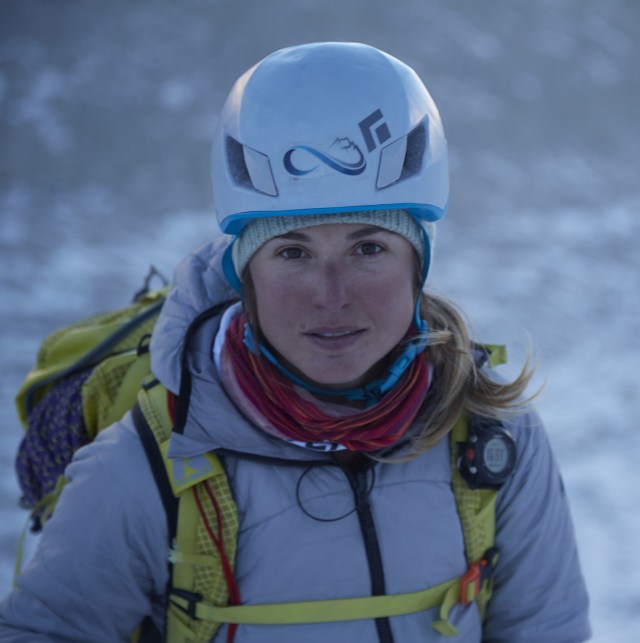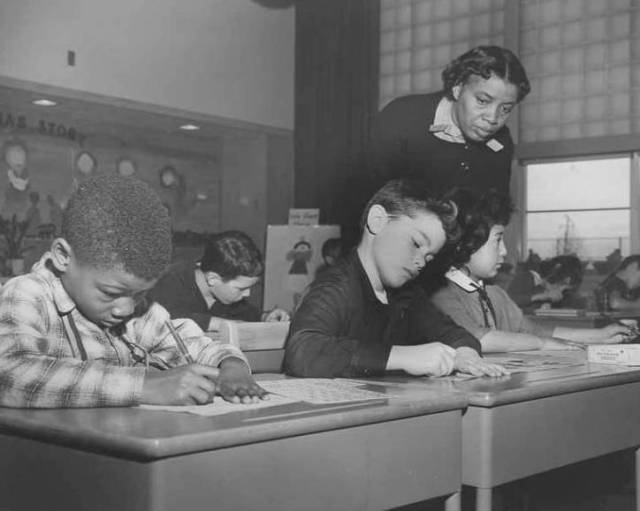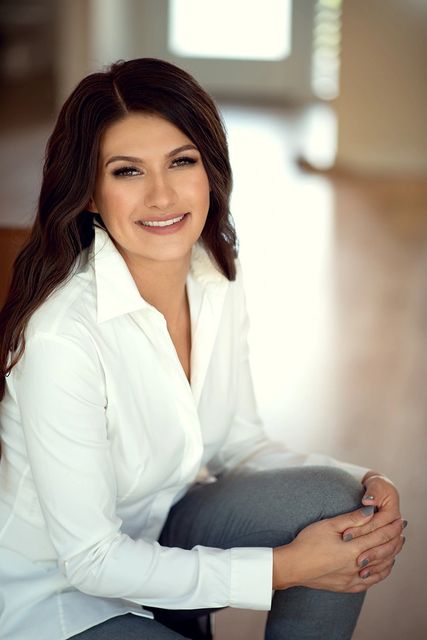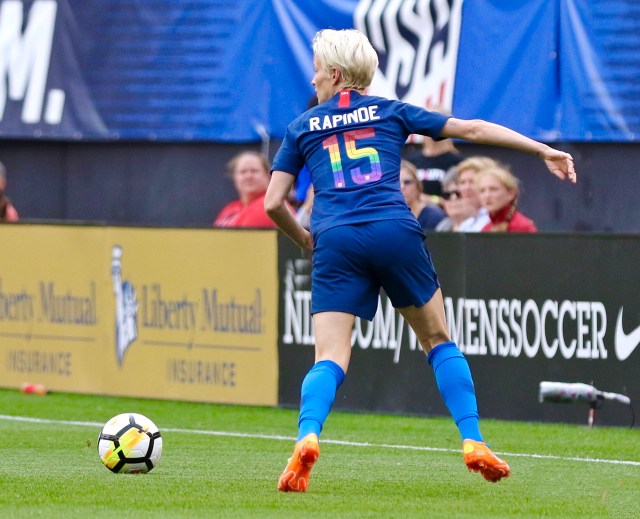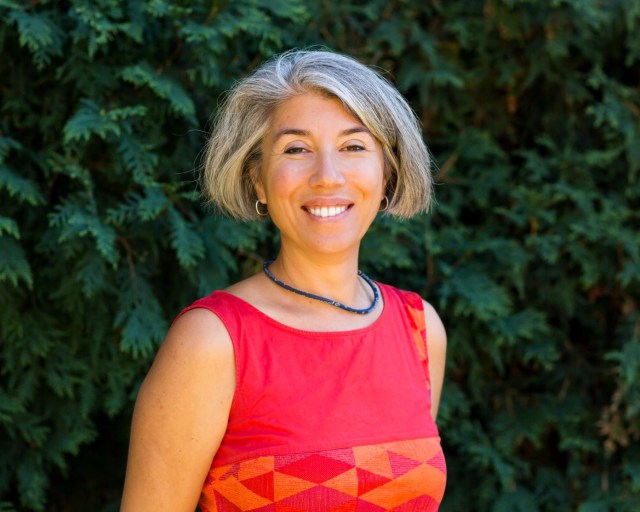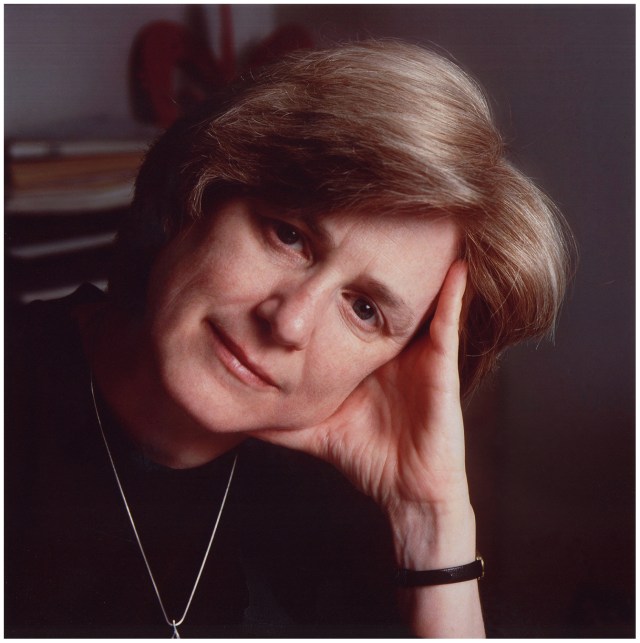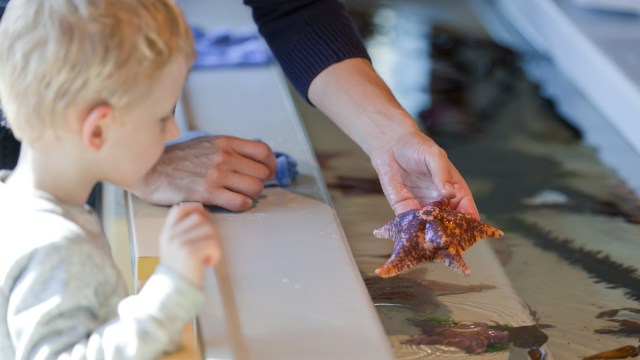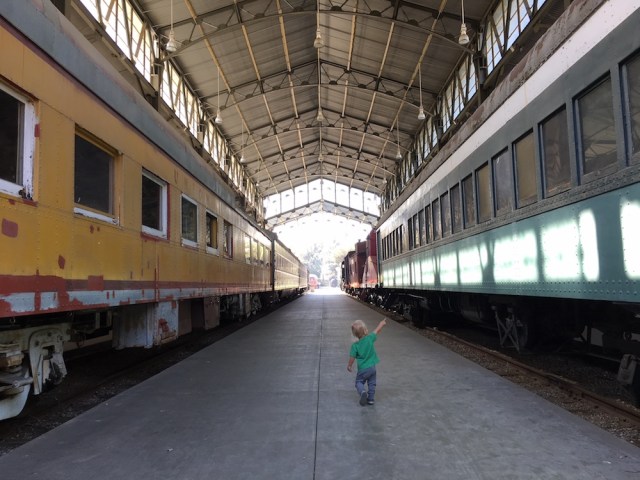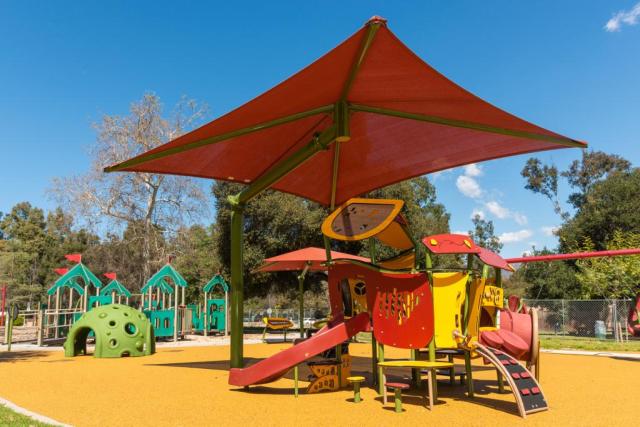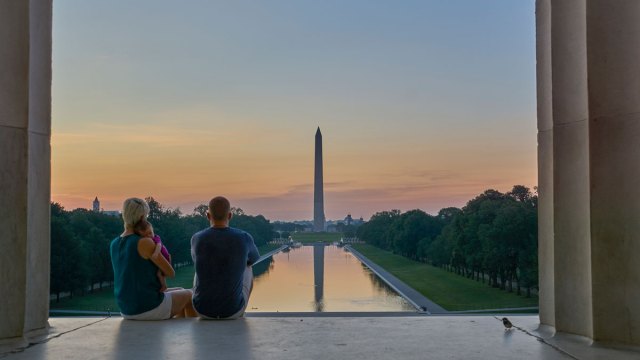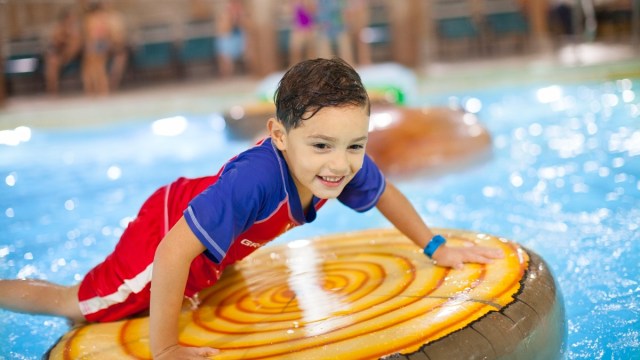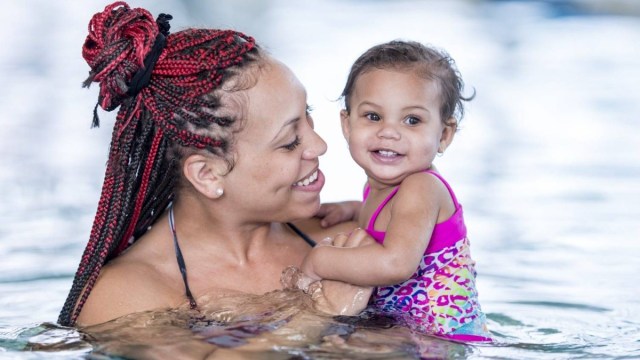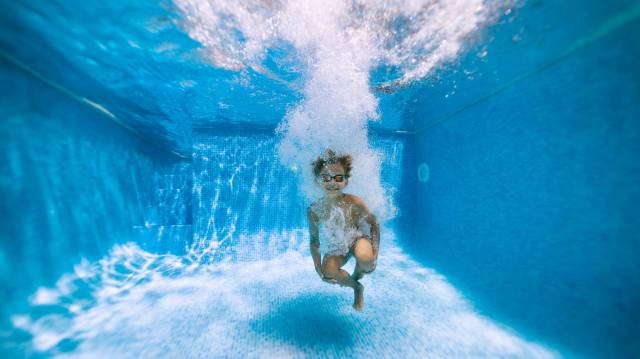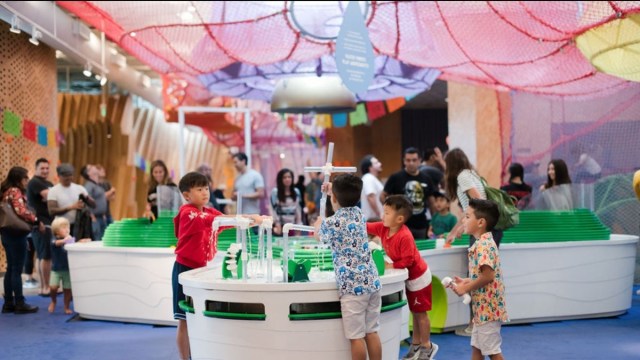The best 100 family-friendly things to do and see in the DMV
Millions of people visit the Nation’s Capital every year, and the list of things to see and do in Washington, DC is seemingly endless. No matter the season, DC offers gorgeous hikes and views, rich cultural experiences (including hidden gems in DC) and some of the best museums in the world. We rounded up all the usual spots like the National Museum of Natural History, the Smithsonian’s Air & Space Museum and the national monuments and memorials. But there is plenty to see and do beyond the National Mall.
We put together the perfect family bucket list of DMV fun. From downtown DC to Baltimore’s Inner Harbor, here are 100 of the best places to take your family throughout the DMV, including some local favorites you won’t find on any other list (PS: check this list if you’re traveling through DC with grandparents).
The Best Places to Opt Outside near Washington, DC
1. Local favorite, Brookside Gardens, features acres of gardens and an extensive conservatory. There is something for everyone with an Aquatic Garden, Azalea Garden, Butterfly Garden, Children’s Garden, Rose Garden, Japanese Style Garden, Trial Garden, Rain Garden, and the Woodland Walk. The Formal Gardens areas include a Perennial Garden, Yew Garden, the Maple Terrace, and Fragrance Garden. We love their seasonal events, such as Gardens of Light in the winter and the Wings of Fancy live butterfly exhibit in the Spring.
2. DC is home to over 1,500 acres of national parkland. Spend a few hours at Rock Creek Park—a large urban park that was created in 1860 (the third National Park designated in the US) and has Civil War fortifications, working mills, colonial houses, and thousands of years of DC history you can explore.
3. Thanks to a law that prohibited selling or disposing of parts of the Capitol removed during a 1958 renovation, anyone can visit the now-abandoned ruins called the Capitol Stones—although hurry as they’re slated to be removed by the National Park Service.
4. Great Falls Park has some of the best natural views in the DC area. The Billy Goat Trail is one of the most popular trails to tackle with kids.
5. At the United States Botanic Garden, you can experience the jungle and the desert and see rare and endangered plants under one roof. Check out the outdoor Children’s Garden and the canopy walk that gives you a bird’s eye view of the plants.
6. The National Arboretum is a massive oasis in the city. The highlight for many visitors is seeing the old columns from the Capitol Columns dating from the 1800s now sitting on a grassy knoll. Don’t miss the extensive bonsai exhibit and state trees.
7. Roosevelt Island is a fantastic natural place to explore with kids, just minutes from the National Mall. Explore on your own or join a ranger-led program.
8. Kenilworth Park and Aquatic Gardens is an expansive garden featuring lotus blooms and lilies. Parents love stroller-friendly boardwalk trail.
9. The C&O Canal served as a 185-mile shipping and transportation route along the Potomac River for over 100 years. See a small part of it on your own or through one of the many events held along the canal. You can even take a boat ride along the canal. More adventurous families can even book a stay in a preserved canal house.
10. The grounds of the National Cathedral are their destination. The Bishop’s Garden is a peaceful oasis in the city. Visit the Shadow House gazebo, bring a picnic and ball, and enjoy the grounds. Just past the Bishop’s Garden is Olmsted Woods, with a contemplative circle and native flowers.
11. Kingman Island and Heritage Trail is home to rare ecosystems and over 100 species of birds. This unique spot was created when the Anacostia river was dredged over 100 years ago. Today it’s a great place to look for frogs, ride a (free!) paddle boat, and hike. Check out their events calendar for family-friendly events focusing on helping the environment.
12. Thrill seekers will love exploring the many amusement parks in the DC area. From the sprawling Six Flags America to the smaller Western-themed Adventure Park USA, there is something for big and small adventurers alike.
13. DC kids love to play! These are the best playgrounds in DC for kids or head to a playground with tons of shade to escape the DC heat.
14. The DC area is home to an extensive network of spray grounds and splashpads. Open all summer long; these water features are a great place to cool down and let kids burn off some steam.
15. Take a mule-drawn boat ride down the C&O canal. This truly 19th Century experience takes visitors on a scenic trip through Great Falls while they learn about those who lived and worked along the C&O canal in the late 1800s. Boats leave from the Great Falls Tavern.
16. When the original Walter Reed hospital and its grounds closed, it transformed into The Parks at Walter Reed. This area, which had been closed to the public for decades, now features a lovely rose garden, playground and more. Check out their calendar for regular events, including farmers’ markets, outdoor movies, jazz performances and more.
17. Gravelly Point is a park ideally situated for watching planes take off and land from the nearby Regan National Airport. So bring a picnic and settle for an hour or two of epic activity in the sky.
18. The highlight of the expansive Watkins Regional Park, for many families, is the Wizard of Oz-themed playground, complete with an Emerald place and ruby red slipper slides. The park also houses a mini-golf course, a petting farm and more.
19. The DC area’s climate is excellent for growing berries, apples, peaches, pumpkins and we’ve compiled a list of the best pick-your-own farms in the DC area.
20. East Potomac Park is a peaceful park with great water views. The park houses a golf course, mini golf course and public pool. The tip of the park is known as Hains Point and has a playground.
21. Practice your putting on DC’s best mini-golf courses. From glow-in-the-dark indoor courses to a classic mini-green overlooking the Potomac, there’s loads of fun spots to hit some balls.
22. One of the best playgrounds in the DC area is accessible to all kids. Clemyjontri Park has everything from a wheelchair-accessible swing to an accessible carousel. The rest of the park features slides, climbing structures, a maze and more.
23. Wheaton Regional Park is also known as Adventure Park for a good reason. Multi-story slides and a huge blue pyramid great for climbing share space with a carousel, miniature train, digging area and more.
24. Not far from the National Zoo, Tregaron Conservancy is a great place to explore and decompress after a busy day in the city. It hosts a beautiful network of woodland trails, streams, gardens, and meadows.
25. Did you know that there’s a hidden boathouse in Georgetown? At Fletcher’s Cove, you can gain access to the Potomac River and the C&O canal, which is excellent for paddling, row boating, canoeing, and kayaking. Then, head out on your own or take a guided tour. Fletcher’s also rents bicycles for those who prefer to stay on land.
26. Cabin John Park has a huge playground and plenty of shade, which makes it a fan favorite among local families. There is also a miniature train, picnic pavilions and plenty of room for sports.
27. Adjacent to Clara Barton’s home is the fun and interesting Glen Echo Park. The park was formerly an amusement park but is now a vibrant center of arts and fun. The park features the only carousel in a national park, a playground, a children’s theater, a puppet theatre and a network of yurts where artists work and sell their wares.
Related: It’s a Date! 7 Awesome Family Date Spots in DC
The Best Museums & Cultural Experiences in Washington, DC
28. The White House isn’t just where the President lives; it’s also the People’s House! This means it’s open to the public, and it’s a must-do when visiting DC. You won’t be able to see all areas of the White House, but you can visit the East Wing and the residence with some preparation. Contact your Congressional representative at least 21 days before your visit to schedule a tour.
29. After checking out where the President lives, swing over to Capitol Hill. There, you can walk the Capitol grounds and see the Capitol’s majestic rotunda for yourself. Reservations are recommended to visit the Capitol Visitor’s Center. For an even more in-depth look, contact your Congressperson or Senator in advance of your visit for a tour of the Capitol itself.
30. Just a short walk from the Capitol is the Supreme Court. The Court is usually open to the public on weekdays, requiring no reservations. Even if you can’t get inside, it’s worth a stop to take a photo on the Court’s iconic stairs.
31. We are getting closer to the day when anyone might be able to travel to space. Until then, visit the Smithsonian’s Air & Space Museum to get an up-close look at rockets, space science, and hands-on exhibits about how things fly.
32. To see an actual space shuttle, you must travel to the Udzar-Hazey Center, the Air & Space museum’s satellite location near Dulles airport. The Udzar-Hazey center also houses a Star Wars X-Wing fighter. In addition, the Udzar-Hazey Center hosts regular family-friendly events, so keep an eye on their events calendar.
33. The National Museum of Natural History is a must-do for those who prefer learning about the land. The Museum of Natural History is home to an impressive collection of dinosaurs but don’t miss the indoor butterfly habitat and hall of gems while you are there!
34. No trip to Washington, DC, is complete without a visit to the National Mall to see the monuments. See the monuments for free on foot or book a tour by Segway, bike, or trolley. The monuments are magical at night so consider visiting after sundown if your kids can stay up past dark.
35. Go deep undercover at the International Spy Museum. Learn essential spy skills like crawling through mock air ducts to eavesdrop and designing outfits for secret agents.
36. Hillwood Estate, Museum and Gardens is one of DC’s best-kept secrets. The former home of the heiress to the Post Cereal fortune is now open for exploration. Take a kid-friendly tour of the stately mansion but stay for the expansive gardens, including a Japanese garden, lunar lawn, French parterre, putting green, and more. Bring a picnic or grab something to enjoy at the estate’s café. Keep an eye out for the heavy French and Russian influences throughout, inspired by Mrs. Post’s time accompanying her husband to his assignments as an Ambassador.
37. Visit Artechouse to see the magic happen when art and technology collide. Artechouse’s exhibits change every few months, but they are always interactive, immersive and worth the trip. Past exhibits have focused on everything from cherry blossoms to the life of a neuron. Check out the bar before you leave, which features themed drinks (including virgin versions) related to the exhibit’s theme, complete with V.R. coasters.
38. Not far from Artechouse is The Wharf DC. The Wharf is a great place to go if you have wanted to swing on a giant swing with river views or roast s’mores on a big fire pit. Check out activities ranging from riding a free Water Jitney to renting a paddle board. It’s also an excellent destination for dining and seeing live music.
39. See where George Washington and Martha lived by visiting their well-preserved home in Virginia. Mount Vernon also features sprawling grounds perfect for exploring. While there, you will also learn about the history of the enslaved people who lived and worked at Mount Vernon. Before you go, make sure to heck out the kids’ activities happening on the estate.
40. The National Cathedral is a stunning masterpiece and the sixth largest cathedral in the world. Inside view colorful stained glass and search for the moonrock embedded in one of the windows. Visit the many chapels and look for carvings of luminaries, including Rosa Parks and Hellen Keller. Outside look around for whimsical gargoyles.
41. Washington, DC, is an international city and home to embassies from all over the world. Take a self-guided tour of Embassy Row starting at DuPont Circle to see some of the best the street has to offer.
42. The Culture House is an iconic spot for selfies in Southwest DC. The church building dating to the 19th Century is painted in bright, bold colors and is home to a vibrant arts community. Check out their exhibitions to see what is on display. Before you head out, make sure that Culture House is open to the public when you want to visit since it is a popular venue for private events.
43. The Woodrow Wilson House is where the former president and his wife moved when they left the White House in 1921. This well-preserved time capsule from the roaring 20s is just off of Embassy Row and hosts events, including tours and vintage game nights. The Woodrow Wilson House strives to be historically accurate and has programs relating to the impact of President Wilson’s controversial policies, including the segregation of the federal workforce.
44. The Underground Railroad Experience takes visitors on a trail that simulates the experience of enslaved people who fled the south in search of freedom. The trail starts at Woodlawn Manor and takes visitors through woods and fields. Take a guided tour or print out the self-guided map that explains how formerly enslaved people found hiding spots and the dangers they faced on their journey to freedom.
45. Woodlawn Manor House isn’t just the start of the Underground Railroad Experience; it’s also a well-preserved example of the Maryland of yesteryear. The manor includes a sprawling 19th-century house. The grounds preserve Maryland’s agricultural history. Events include public hikes, old-fashioned games and demonstrations on churning butter by hand.
46. The Clara Barton House tells the story of a remarkable woman who founded the Red Cross. Her home once served as the Red Cross’s office. Visitors can explore three levels of this beautiful home and learn more about Barton’s life and work.
47. The National Museum of Women in the Arts, not surprisingly, is dedicated to showcasing art by women artists. It’s a great way to view work from artists who have historically been marginalized.
48. The Renwick Gallery, located across the street from the White House, is part of the Smithsonian’s American Art Museum. This quirky museum has featured exhibits centering on the Art of Burning Man, floor-to-ceiling fiber installations, and Chicano revolutionary graphics. In addition, the Renwick Gallery hosts periodic family events, so check their calendar before heading over.
49. Blagden Alley in DC’s historic Shaw neighborhood is an off-the-beaten-track destination worth exploring. The alley is home to well-preserved townhomes and horse stables from the 19th Century, which now house cafes, bars and restaurants. Don’t miss the colorful “LOVE” mural, a favorite spot for selfies.
50. Visit the Library of Congress. While you have to be an elected representative to borrow books, the Library of Congress’s buildings are open to the public and magnificent! Rare and significant materials are often on display.
51. The National Portrait Gallery is a fantastic way to learn about U.S. history by viewing portraits of presidents, authors, athletes, movie stars and more. If you visit, ask about their family kits for self-guided activities.
52. The American Art Museum is connected to the National Portrait Gallery and showcases the best work of American artists. Don’t miss the building’s beautiful, soaring atrium, the Kogod Courtyard, between the two museums. It’s a great place to stop for a snack break.
53. The Sculpture Garden is a whimsical open space in the heart of the city. Walk through to explore larger-than-life installations, including the façade of a giant red house and art deco vines, or make a pit stop for lunch. During the winter, a big fountain in the middle of the garden transforms into an ice skating rink.
54. The National Gallery of Art features modern art in the East Wing and classic pieces in the West Wing. The museum is full of surprises, including a giant blue rooster on the roof and a magical walkway dotted with pinpoint lights. It’s also home to one of the best cafes on the National Mall.
55. Just off the National Mall, the Canadian Embassy holds a surprise. The domed rotunda just outside the main entrance creates the perfect echo chamber.
56. The National Children’s Museum is a wonderland for the younger set. The museum has hands-on activities, including a green screen, a giant indoor slide, art projects and more.
57. The Hirshhorn Museum is a modern round building on the National Mall. This is the place to go to see contemporary art in DC They also host regular family-friendly events with hands-on activities.
58. The Mansion on O Street is the quirkiest place in DC! Spend an afternoon exploring the wacky rooms and look for hidden doors to nowhere. Find the stuffed life-sized bear, secret wine cellar and more. Then, stay to dine or have tea in their eclectic restaurant.
59. There is a real castle in the heart of DuPont Circle. The Brewmaster’s Castle, known as Heurich House, has survived since the 1800s. Built by the owner of the largest brewery in 19th Century DC, this marvel features intricately carved fireplaces, mantles and more. Now open to the public, the Castle often hosts throwback game nights and family-friendly scavenger hunts.
60. The Basilica of the Shrine of the Immaculate Conception is the largest Catholic church in the United States and one of the tenth largest in the world. Open to visitors of all faiths, the Basilica has over 80 shrines dedicated to the Virgin Mary, representing cultures and traditions from around the globe. The Basilica is stunning when decorated for Christmas but is worth a visit any time of year.
Related: The Latinx-Owned Shops and Restaurants in DC You’ll Want to Visit
61. The National Museum of the American Indian tells the story of ingenious peoples throughout the Americas, with input from Native voices. It’s a great way to learn about not only the complicated history surrounding American Indians but about vibrant Native culture and arts. Don’t miss the award-winning Mitsitam Café to sample traditional Native foods. Check out the play area where you can build an igloo and try your hand at Native-inspired crafts.
62. The National Museum of African American History and Culture tells the history of the African American experience in the United States, from slavery through Jim Crow to the Civil Rights movement. This museum also highlights the rich contributions of African Americans to American Culture, from music and film to food and sports.
63. The National Museum of American History touches on nearly every aspect of American life. History exhibits explore the development of railroads and transportation, cultural exhibits explore everything from video game development to Julia Child’s kitchen, political exhibits showcase First Ladies’ inaugural ball dresses, and pop culture exhibits feature iconic items like Dorothy’s ruby red slippers from the Wizard of Oz. Don’t miss the hands-on activity areas for kids of all ages.
64. Want to see how money is made? Head over to the United States Mint just off the National Mall. Take a tour, then visit the Coin Shop on your way out.
65. Tudor Place has been home to six generations of Martha Washington’s descendants. Occupied through the 1980s, this home and its grounds are now open to the public. Visitors can tour the house and the Georgetown estate’s 5 1/2 acres of land. In addition, Tudor Place hosts frequent family-friendly events, including Tudor Tots. So keep an eye on their calendar.
66. Dumbarton Oaks is the former home of a distinguished ambassador and his wife. Now a research institute run by Harvard University, the house and expansive gardens are open to the public. Dumbarton Oaks has expansive gardens named one of the ten best in the world by National Geographic. They make a lovely spot to rest and explore after a busy day of eating and shopping in Georgetown.
67. The National Naval Museum is a hidden gem. This museum tells the story of the U.S. Navy, from covert submarine operations to the role of the Navy in conflicts starting with the Civil War. Many exhibits are hands-on and lots of fun.
68. The National Postal Museum is one of the Smithsonian’s lesser-known museums, but it is worth a visit. Learn the history of Postal Services from its days as the Pony Express and trace how the agency became the high-tech operation it is today. Sit on a horse-drawn wagon, “drive” a big rig, hop on an old-fashioned mail hauling train and test your speed at sorting packages before you leave mail a postcard and get it hand-stamped.
69. The National Aquarium in Baltimore is a massive home to all types of sea life. The aquarium’s centerpiece is shark alley, where visitors are surrounded by over 200,000 square feet of various sharks. In addition, learn about jellyfish, see dolphins being playful, watch scuba divers feed deep sea creatures and more.
70. Baltimore’s Maryland Science Center is the destination in the greater DC area for kids to get up close and personal with science. Learn about everything from gravity, space, electricity, and the human body’s functions. There are plenty of hands-on, interactive exhibits for kids and teens. Also, check out the planetarium for a glimpse into the night sky.
71. Port Discovery Children’s Museum in Baltimore is a wonderland for kids of all ages. Kids can get wet in the Wonders of Water room (raincoats provided!), slide down three stories from the top to the bottom of the museum, create in the art room, join in a storytime, and explore ancient Egypt and more.
72. The written and spoken word dominates our lives, but a museum has not been dedicated to this essential part of our lives until now. Planet Word is dedicated to how people all over the world use language. Planet Word is full of voice-activated and immersive exhibits.
73. The National Building Museum is dedicated to buildings of all types. Past exhibits have centered around everything from art deco movie theatres to eco-friendly homes to designing livable neighborhoods. In addition, the National Building Museum is a popular family destination because of its two exhibit spaces dedicated to exploration and play. All of DC looks forward to the museum’s annual Summer Block Party when a new, fun, massive exhibit is installed for the season.
74. Abraham Lincoln lived in what is now known as President Lincoln’s Cottage for over 25 years. Today, the home and grounds host events year-round. Take a tour of the house and explore President Lincoln’s life in the adjacent visitors’ center.
75. Fredrick Douglass National Historic Site commemorates the extraordinary life of the famed abolitionist. Take a tour of his DC home and view thousands of objects belonging to Fredrick, Douglass, and his family. This site is a unique look into the life of this formerly enslaved person who dedicated his life to securing freedom for others.
76. Ford’s Theatre is where President Lincoln was assinated. Tour the theatre to learn about one of history’s most famous assignations or grab tickets to a play in this theatre which is still operational.
77. After President Lincoln was shot, he was carried to the Peterson House across the street from Ford’s Theatre, now known as The House Where Lincoln Died; the room where the president succumbed to his wounds has been preserved. Visitors who are not faint of heart can even see the pillow used while at the Peterson House, which is stained with the president’s blood.
78. Madame Tussaud’s Wax Attraction is the place to hang out with everyone from Obama to Taylor Swift. Learn about everything from how the attraction’s intricate wax figures are created to the civil rights movement to landing on the moon. Because this is DC, Madame Tussaud’s has a wax figure of every president from George Washington. Take a photo with the current president in an Oval Office replica. This attraction is surprisingly interactive, with the opportunity to pose for several pictures with American luminaries, costumes, and a Virtual Reality option.
79. The Holocaust Museum teaches children about the Holocaust through the story of a child. Remember the Children: Daniel’s Story tells the story of one child’s experiences living in Nazi Germany. This exhibit is on the museum’s first floor, close to the entrance, so it’s possible to visit with younger children without seeing the rest of the museum, which may be upsetting.
80. The REACH at the Kennedy Center honors President Kennedy’s commitment to the arts. The REACH transformed the Kennedy Center from primarily a performance space to providing more room for arts education and community events. Check out their calendar to find a family-friendly event or spend some time wandering the grounds. Definitely don’t miss the reflecting pool.
81. The National Archives in DC is a must-do for history buffs. Visitors can gaze at the soaring rotunda’s Declaration of Independence, Constitution, Bill of Rights and Magna Carta. Also, check out their events calendar for family-friendly events that turn little ones into history detectives.
82. National Geographic is best known for its stunning magazines. However, those in the know also know that the National Geographic Museum is not only a place to see some of National Geographic’s famous photos up-close. It [‘s also a great family museum that showcases many of the topics covered by National Geographic in a fun and accessible way. Past exhibits have centered around Jane Goodall, ancient Egypt, and studying animals in the wild.
83. The Franciscan Monastery of the Holy Land in DC is a magnificent place to explore families of all faith traditions. The monastery has lovely gardens that are more than a century old featuring replicas of sacred shrines from around the world. Visitors can also tour the monastery itself. The highlight of a visit for many is the extensive underground catacombs.
Related: Your Family’s Official Fall Bucket List
Must-Visit Gems in Washington, DC
84. Visit National Harbor and Gaylord National Resort. Take a ride on the Capitol Wheel to catch great city views, shop and dine and spend time diffing on the beach. National Harbor hosts special events like a Lantern Festival, outdoor movies, jazz festivals and more. Make the most of your visit with a stay at Gaylord National and experience an indoor laser and lights show in an impressive atrium, a family-friendly rooftop bar with incredible sunset views and augmented reality games.
85. Roer’s Reston Safari lets visitors get up-close and personal with animals. This safari has two parts. First, hop in your car to take a self-guided tour to see bison, llamas, deer and more. These animals will wander right up to your car for a treat. Then, head over to the zoo to visit with barnyard animals. Feed sheep and see goats, zebu and more!
86. Whether you live in DC or are just passing through, it’s good to shop local! Everything sold at Made in DC is made by a resident of the DC area. It’s the best place to find something unique that celebrates DC or your new favorite, snack, t-shirt or toy.
87. Dino fans of all ages should not miss Dinosaur Park. This park is home to an unbelievably large number of fossils still in the ground. Better yet, young archeologists get to dig themselves. If you dig up a rare fossil, it is cataloged with your name, and you could see your name in a museum one day! Dinosaur park also has a playground that is, of course, dinosaur themed.
88. DC is one of the few places in the United States you can see pandas. They are even more adorable in person. Be sure to visit the National Zoo to catch a glimpse. While at the zoo, explore the rest of Asia Trail, play in the Pollinator Playground and seek out your favorite creatures, from tigers to bald eagles. Best part? Admission is free to the National Zoo.
89. You can’t go too far in the DC area without finding a bowling alley. We love swanky Pinstripes.
90. In simple terms, hop-on, hop-off big bus tours means you can get on and off a Washington, DC bus tour at any of the designated stops, as many times as you wish.
91. If you want to do something adventurous, check out The Escape Game in Georgetown. Their 60-minute adventures include A Pirate’s Adventure, The Curse of the Mummy, and Dr. Whack’s Elixer of Life. If you don’t have that much time, they have two 45-minute adventures, Titanic and The Cabin.
92. The Sweet Home Cafe inside the National Museum of African American History is a cafeteria you do not want to miss. Celebrity chef Carla Hall is the culinary ambassador, so you know there’s some delicious food being served. The restaurant aims to feature African American history and culture through food.
93. The original DC food and art market, Eastern Market, opened in 1873, and it is still a happening local spot. In the heart of Capitol Hill, the market features fresh food, community events, and local farm-fresh produce and handmade arts and crafts everyone will enjoy.
94. Get ready for a one-of-a-kind local art experience at the Torpedo Factory. Not only can you peruse beautiful original pieces to purchase and take home, but you’ll also get a chance to see pieces in process, talk to the artists and experience over 80 local artists’ studios.
95. Rent a kayak from the Key Bridge Boathouse and paddle along the Potomac River to catch a spectacular view of the Georgetown waterfront, Roosevelt Island, and the Key Bridge’s underside.
96. The Municipal Fish Market at The Wharf is the oldest continuously-operating open-air fish market in the United States, dating back to 1805. The Fish Market remains an iconic DC destination for hungry locals and savvy visitors seeking fresh fish, crabs, and cooked seafood.
97. Join a 40-year tradition by visiting or joining the drum circle at Merdian Hill Park. Every Sunday at 3 pm, locals from all walks of life come together to perform and create some cool beats. All ages are welcome to watch or drum along together.
98. Rental a bike at one of the hundreds of stations around the metro DC area. It’s a fun and affordable way to get around and see the city. Also, you can do your part to reduce carbon emissions and choose a fun way to explore that’s good for you, your family and the environment.
99. Catch the sunset over DC from the Kennedy Center terrace. Surprisingly, you don’t need a ticket to visit this area. You can head straight to the terrace, order some drinks and goodies and enjoy one of the best sunset views in the DMV.
100. If you and your crew like to run, then DC is the town for you. You’ll find a local 5K or family fun run almost any time of the year. It’s a great way to get some exercise as a family and see the sights of DC.
